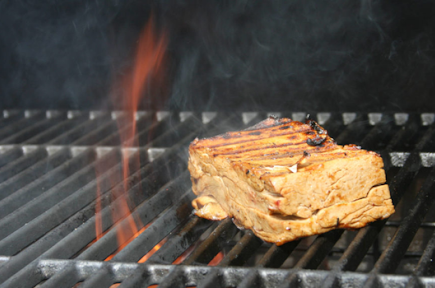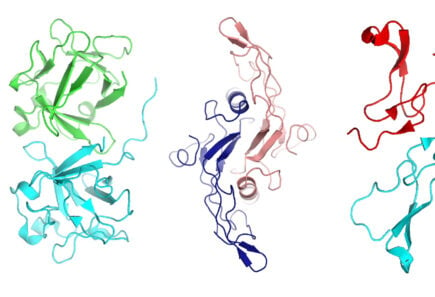Open-access formulations & optimization methods for cell culture media and growth factor cocktails
The availability of more open-access formulations will provide a foundation to enable both academic researchers and startup companies to develop their own customized formulations with far less effort and cost.
-
Cultivated
- Research
- R&D
- Raw Materials, Ingredients, & Inputs
- Cell culture media
- Academics
Description
Very few formulations for animal cell culture media and growth factor or differentiation cocktails are publicly available. The companies that currently exist as media suppliers or service providers specializing in custom media formulations are focused on industries such as biopharmaceuticals, whose needs are very different from those of the nascent cultivated meat industry. The availability of more open-access formulations, especially those that have been optimized for species and cell types relevant to cultivated meat, will provide a foundation to enable both academic researchers and startup companies to develop their own customized formulations with far less effort and cost.
Current challenge
Not enough is yet known about the ideal formulation for maintaining, proliferating, and differentiating the types and species of cells that are relevant for cultivated meat. A few media formulations for human stem cells have been published, but the vast majority are kept proprietary by the companies that develop them, which inhibits transparent optimization. Furthermore, the existing formulations have typically been optimized for high-value R&D or therapeutic uses, rather than for cultivated meat-relevant considerations of cost or performance. More work is needed to optimize media and differentiation cocktails or supplements for a variety of cell types from food-relevant species. Additionally, no high-quality open-access frameworks exist for modeling formulation adjustments for cell culture media, meaning that companies must do this work in-house and are therefore likely duplicating efforts unnecessarily. This presents a challenge for both academia and industry.
Proposed solution
Systematic optimization using approaches such as Design of Experiments (DOE) or other more sophisticated algorithms should be applied to identify media formulations that support cultivated meat-relevant cell properties such as maintenance of the desired transcriptional state (for example, “stemness”) and a high proliferation rate. Such analyses should also consider the costs and food safety of various components as well as effects on organoleptic attributes like texture and production of volatile compounds or their precursors. Importantly, at least some of this work should be done within the academic or non-profit sector so that the resulting formulations can be made openly available. Additionally, frameworks for incorporating non-conventional media components like low-cost feedstocks or protein hydrolysates while still meeting the performance requirements of the cells would provide a useful resource for this growing industry. This research should be undertaken with the understanding that the goal is to provide a solid starting point from which companies can develop their own individualized solutions, as well as to develop tools and knowledge to support further academic research.
Anticipated impact
Optimized media and supplement formulations would enable academic researchers to achieve better cell health and more predictable behavior, thereby generating more reliable results with reduced upfront effort. Industry would benefit from having open standards and frameworks for incorporating unconventional, lower-cost components from which to start developing their own in-house optimizations. This would accelerate R&D while supporting cost reduction, thereby allowing cultivated meat to reach price parity more quickly. While media optimization services exist in private industry, they have not been tailored for the unique considerations of the cultivated meat industry, they are expensive, and they do not contribute to open-access knowledge for future advances. Solving this challenge without open-access research would inevitably lead to duplication of effort and little benefit for academics, who in turn would be less able to support the growth of the industry in other areas.
Related efforts
The Essential 8 formulation was published openly while also being profitably commercialized. | B8 is a further-optimized version of E8 for in-house production by academic labs at a fraction of the cost, and has also been recently commercialized. Similar opportunities likely exist for specialized formulations for cultivated meat.
GFI resources

Analyzing cell culture medium costs
This white paper explains different routes to lowering the cost of cell culture medium and making cultivated meat economically viable.

Research grants
Learn about cutting-edge alternative protein research funded by GFI. Find funding opportunities for your own research.

Find collaborators
Join the GFIdeas global community of 2,000+ entrepreneurs, scientists, investors, and subject matter experts. Discuss projects on the members-only Slack community, attend monthly seminars, and use the community directory to help you find collaborators working on similar Solutions!
Related solutions
-
Cultivated
Understand animal and cellular efficiency, yield, and input
Because cultivated meat replicates the fundamental biology of the source animal, animal-level data may be informative for predicting cellular behavior in culture.
-
Cultivated
Uptake and biosynthesis of fat in cultivated meat cells
To recapitulate meat’s fat profile, research is required to determine which lipids muscle and fat cells can produce efficiently—and from which precursors—and which lipids they can absorb directly from the…
-
Fermentation
-
Plant-Based
Open-access product formulation specification sheets
Open-access product formulation specifications could provide clear metrics and objectives for product developers on attributes like taste, price, nutrition, and ingredient ratios.

Explore the full solutions database
Browse 300+ startup ideas, commercial opportunities, research projects, and investment priorities throughout the alternative protein supply chain.
Related GFI research grants

Optimizing media for chicken cells
Learn about Dr. David Block’s work to perfect growth media for cultivated chicken at University of California, Davis.

Lowering the cost of growth factors
Learn about Dr. Peter Stogios’ research engineering improved and lower-cost growth factors for cultivated meat at University of Toronto.

Formulating media with macromolecular crowding
Learn about Dr. Connon and Dr. Gouveia’s work at Newcastle University, UK to formulate growth media for cultivated meat with macromolecular crowding.
Get involved
If you’d like to fund a research project, work on any of these solutions, share information about related efforts that are already underway, or elevate new ideas for advancing the alternative protein industry, we’d love to hear from you!
